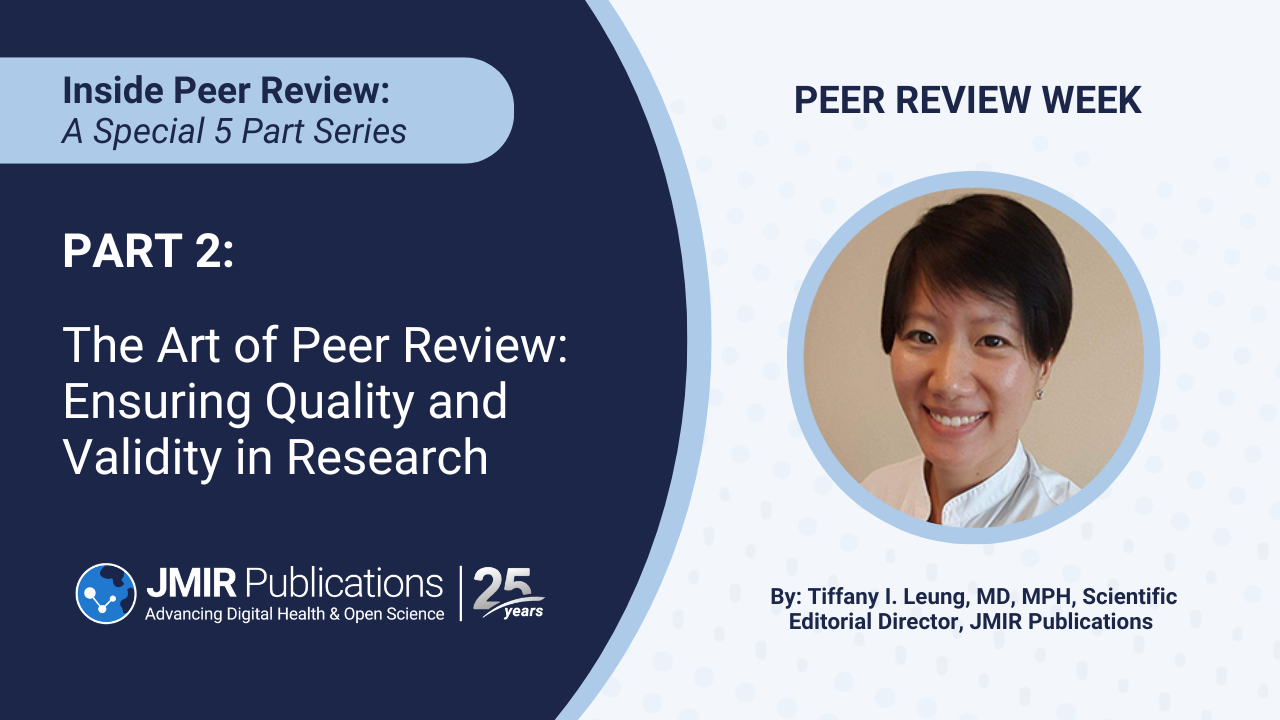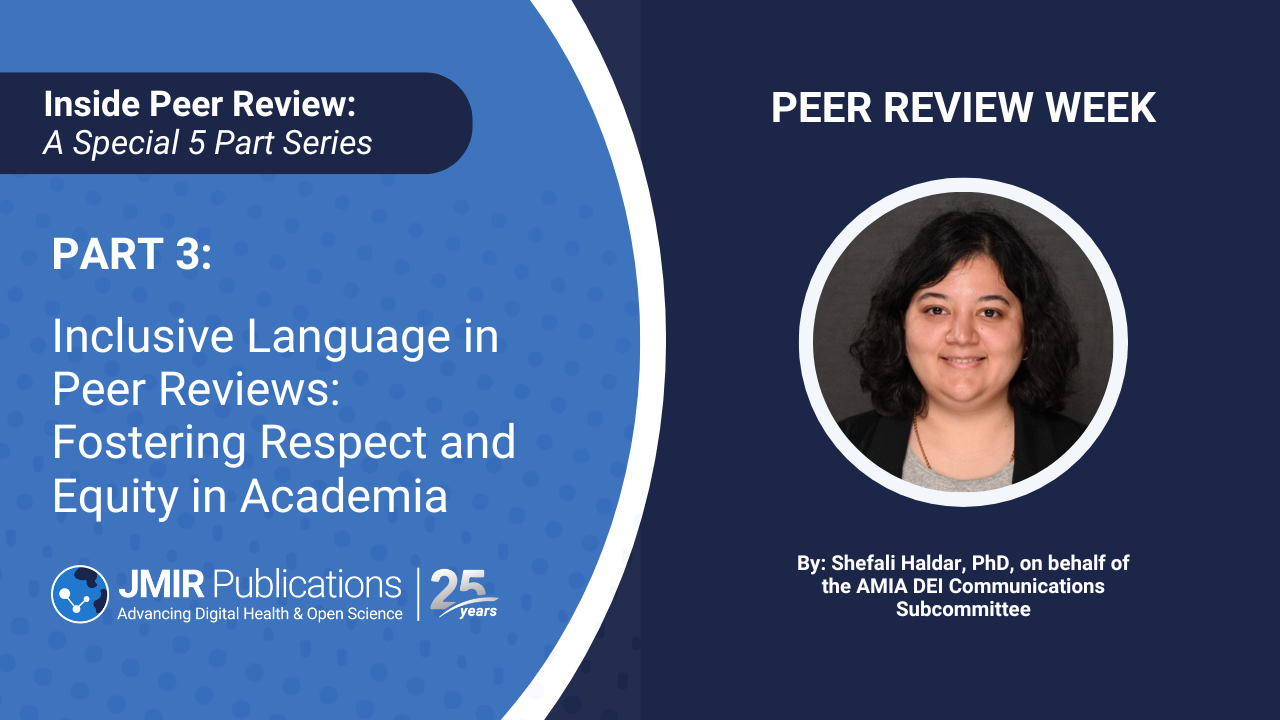The Art of Peer Review: Ensuring Quality and Validity in Research

Peer review is a cornerstone of scholarly publishing, acting as a way to support the publication of high-quality research and to maintain scientific integrity. During peer review, experts evaluate the work of their peers, providing invaluable feedback. Some examples of key feedback during peer reviews include: evaluations of the validity of the scientific question(s) and approach, methodological rigor, how the work contributes to scientific advancement, potential errors or missing relevant/milestone references in the field, and significance and originality of the research (or appropriateness of reproduction in reproducibility studies, if applicable).
To write a high-quality peer review that benefits scientific and scholarly communities, reviewers should approach the task with a blend of expertise, objectivity, and constructive criticism.
Before Accepting An Invitation to Peer Review
- Subject Matter Expertise: A reviewer's deep understanding of the subject matter or method is essential. For instance, a manuscript that reports on the design of an app for supporting self-care of a chronic condition, involving patient participants in the design process, then a reviewer should have expertise in participatory design or co-design methods, even if they do not have specific expertise relating to the chronic condition. It does help to have more expertise aligned with more of the scientific question and methodological approach, however, so a reviewer should carefully consider how well-aligned their expertise is with the title/abstract of a study that is shared with them in an invitation to peer review.
- Timeliness: Adhering to deadlines is beneficial not only for the editor responsible for a manuscript; it is also a service to the authors to adhere to the requested timeline. A delayed review can hold up the publication process, impacting the authors and potential evaluation and publication of their scientific work. If you may not be able to help provide a peer review within the time frame noted in an invitation, you might consider declining the invitation and suggesting another expert colleague who might be able to contribute.
- Conflict of Interest Disclosure: Transparency is key. Any potential conflicts of interest, such as a prior working relationship with the authors, must be disclosed to the editor. Some conflict of interest disclosure policies may vary by journal or publisher, so always check the policy if you are in doubt.
- Constructive Feedback: A reviewer should be able to give feedback that is specific, actionable, and aimed at improving the manuscript. Instead of simply stating, "The methodology is flawed," an author can more readily revise their work to address the identified shortcoming, if the reviewer specifies the issue. Such feedback should be able to be provided using neutral and inclusive language.
The Review Process in Action
The peer review process involves a careful evaluation of various aspects of the manuscript.
- Research Design and Methodology: The reviewer assesses the soundness of the research design and the appropriateness of the methodology, especially in relation to the research question(s). For example, they might consider whether the sample size is adequate and the statistical analysis is robust, particularly for study designs that collect and analyze quantitative data. Also, the conclusions should be supported by the data and findings – and the conclusions should not overreach in the claim, relative to the research conducted. Looking for clearly explained study limitations can also be a way to see how authors are reflecting on the quality of their work and approach.
- Scientific Writing and Citations: The clarity and accuracy of the writing are evaluated, along with the proper attribution of sources. A reviewer might suggest ways to improve the flow of the narrative or point out instances where landmark relevant citations are missing or inaccurate.
- Research Ethics: For research that involves human subjects as participants, authors should be able to clearly explain aspects of ethics assessment of their study methods, informed consent of participants, and other important issues that are essential to protections of human subjects. If a reviewer is concerned about this, then mentioning this to the authors and in confidential comments to the editor are helpful.
- Reproducibility: Sometimes, a helpful rule of thumb is to see if the work as described can be reproduced by another researcher reading the paper. If there are potential reporting gaps, these should be specified so that an author can revise the paper with more details. Reporting guidelines are useful tools for authors, and reviewers can potentially point out where authors need to add more information to more completely report on their scientific work.
Staying Current and Ethical
The world of scholarly publishing is constantly evolving. New technologies, open access models, and concerns about predatory publishing are reshaping the landscape. To uphold the integrity of peer review, reviewers should:
- Stay Abreast of Developments: Stay informed about new publication models, ethical guidelines, and best practices in peer review.
- Approach Reviews with Impartiality: Evaluate the manuscript solely on its scientific merit, avoiding personal biases or preconceptions.
- Refer to journal or publisher policies: When in doubt, or unsure about how to peer review a manuscript for a journal, check the publisher or the journal websites for policies and information that can provide important guidance.
Summary
Peer review is a collaborative endeavor that relies on the expertise of reviewers. By providing thoughtful, constructive feedback, reviewers play a vital role in ensuring the quality and validity of research. Remember, a good peer review isn't only about identifying flaws and communicating them in a professional, constructive manner; it's also about offering insights that help authors refine their work and contribute meaningfully to their field. To read more about how to write a high-quality peer review please visit the JMIR Publications Knowledge Base and Help Center.
Subscribe to Our Blog Updates!


